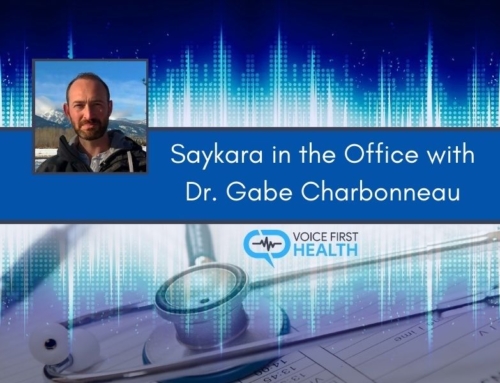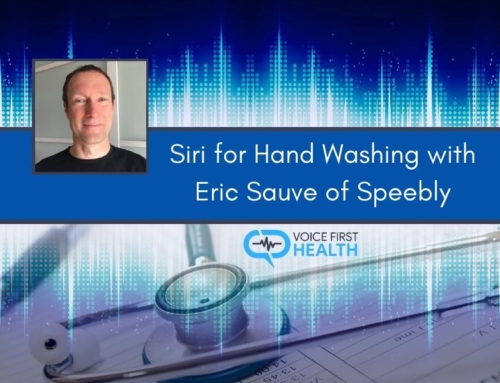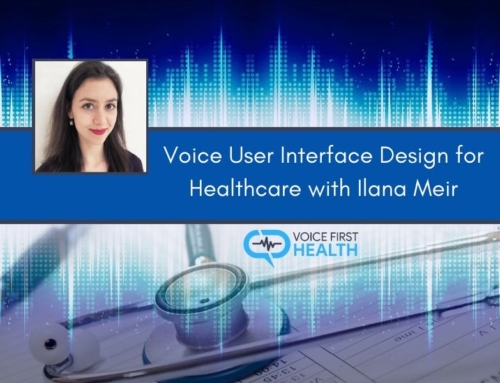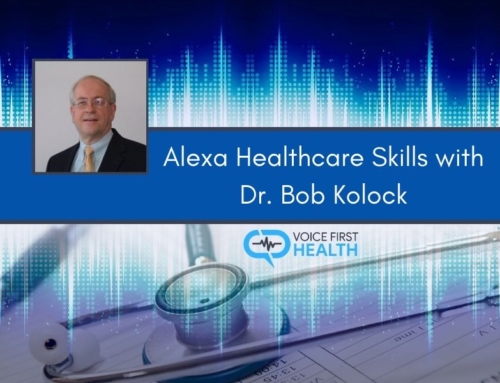VFH Episode 18
In this episode, Teri welcomes Michelle Wan, a computer systems technology student at the British Columbia Institute of Technology (BCIT).
Michelle has been working on an incredible skill in collaboration with the BCIT Nursing Department, that nursing students can use when they are in their simulation lab. The idea behind it is for students to be able to ask Alexa to give them pertinent medical information about the simulated patients that they are practicing on.
Michelle’s supervisor at BCIT is Dr. Bill Klug from the Computer Science Technology & Computer Information Technology Department. They are both working with Mr. Rob Kruger from the Faculty of Nursing at BCIT.
Key points from Michelle!
- The BCIT Lab Simulation Skill: An Alexa skill that nursing students can use in their simulation labs to get patient’s data on demand. The skill supports nurses and helps improve patient care.
- Voice assistance and nurses work side by side to increase efficiency and ease workload.
Getting into the Voice First Space
- Michelle attended an Alexa workshop that was teaching students how to create Alexa skills, where she learned about Alexa and health-related voice first applications.
- She saw the huge potential of the technology and the many ways it can be applied.
The Skill She is Working On
- Nursing students at BCIT go through lab scenarios every day. The scenarios involve a lot of paper charts so the school wanted to create a hands-free process and a central management space for the paperwork. The skill enables students to ask Alexa for patient charts, which Alexa will announce, and also display the relevant results on screen of the Echo Show.
- One starts up the skill by asking for a particular patient number, confirming it’s the right patient, then choosing one of the two separate categories: blood tests or diagnostic reports. After choosing the required category, one asks for a particular type of test and then Alexa says the results and also displays them on the screen.
- Blood tests have different values which nurses can use, while diagnostic reports include a chart or an x-ray that is displayed on the Echo Show. They are then followed by a report of what is being viewed in the blood test or the diagnostic report.
There are all these sorts of possibilities when you are interacting with Alexa

Other Use Cases
- Currently, there are no other educational institutions that are using this type of technology in their simulation labs.
Conference Presentations
- Michelle presented the technology at a conference in Calgary to an audience of critical care nurses and they were really excited about it.
She also did a presentation in Halifax at a women in tech conference where she spoke about the skill and how to develop Alexa skills.
Expansion Plans
- They plan on creating an easier way for instructors and nurses to add information into the skill’s database. They currently have to do it manually. Their idea is to create a website where the instructors will enter information and it will be automatically uploaded into the backend.
- They are putting all the patient data into an easy-to-use database that will be connected to the website. Alexa will retrieve data from the database.
- She intends to keep working on the skill into the future.
The Development Process
- It was a learning curve for Michelle. She didn’t have a lot of background in developing a skill.
- Developing for a screen was challenging but fun.
- She worked on it 15 hours a week for 3 months. She built on a prototype and improved on it over time to create the current version.
The Meaning of Voice First Health to Michelle
- It is bringing the interaction of voice to the health field. She thinks that it will shape the coming years in technology.









